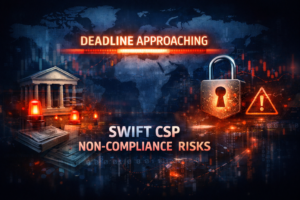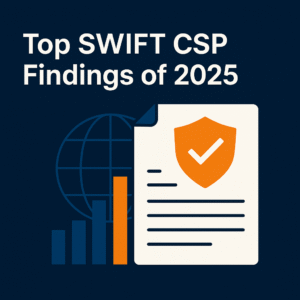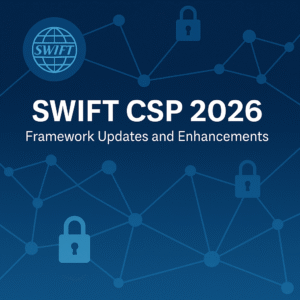
SaaS Sprawl: The Hidden Threat Inside Your Cloud

Imagine you’re the mayor of a bustling town. You have a well-organized city plan, with official businesses, approved infrastructure, and clear rules. Now, imagine little pop-up shops, food trucks, and impromptu services start appearing everywhere. They’re convenient, they’re popular, and your citizens love them. But they’re not on the official map, they’re not inspected, and you have no idea who owns them or if they’re safe. That’s essentially SaaS Sprawl and Shadow IT/SaaS in your organization. Former refers to the sheer, often unmanaged, proliferation of cloud-based Software-as-a-Service applications used across your company. Think hundreds, even thousands, of distinct apps. Latter are the specific parts of that sprawl where employees (or even entire departments) adopt and use these cloud applications without the explicit knowledge, approval, or oversight of the IT or security department.
“Every unauthorized app is a potential unlocked door into your organization’s digital house.”
I still remember the morning Mia almost broke the internet. Mia, a project manager at a growing fintech startup, found a shiny new app that promised to “make meetings disappear.” It had a soothing logo, a catchy tagline, and a free trial. What could go wrong? Within minutes, she signed up using her work email and uploaded a few client documents to “test it out.”
By afternoon, her teammates were collaborating on it. By the end of the week, the app had quietly synced folders containing sensitive strategy files. A week later, a vendor replied to an email referencing a “draft” document that no one remembered sharing publicly. Somewhere along the way, Mia’s harmless experiment had opened a backdoor to her company’s data.
Welcome to the Chaos of SaaS Sprawl
This is how SaaS sprawl begins. Quietly, innocently, and often with good intentions. Employees find tools that make their jobs easier: a design app, a data visualizer, a chat plugin, a file converter. None of them mean harm; they just want to move faster.
But each signup creates a new account, a new password, and a new data repository. Multiply that by dozens or hundreds of employees, and suddenly your organization’s digital ecosystem looks less like a neat office and more like a city with a thousand open windows. Security teams have a name for this: Shadow IT/SaaS applications used without IT’s knowledge or approval. At first, it seems harmless. But every unmonitored tool becomes a potential entry point. These apps often request broad permissions (“Access all your files,” “Read your calendar,” “Send emails on your behalf”), and if even one gets compromised, attackers don’t need to break the front door; they can just walk in through the side.
“You can’t patch what you can’t see, and you can’t secure what you don’t know exists.”
When the shadows become headlines. You don’t have to look far to find real-world proof. In 2023, Okta, one of the world’s biggest identity providers, reported a breach traced back to a third-party support account. One small window into their system allowed attackers to attempt breaches across multiple customers.
Earlier this year, Dropbox Sign (formerly HelloSign) disclosed unauthorized access to its production systems, exposing sensitive data. And of course, the SolarWinds incident a few years ago remains the classic example of how a third-party connection can compromise thousands of organizations downstream.
These aren’t isolated events they’re warnings. Each one started with trust placed in an external service. And trust, without verification or visibility, is the seed of Shadow IT.
The Hidden Drain No One Talks About
Beyond the security nightmares, SaaS sprawl quietly drains money and time. Finance teams end up paying for duplicate tools. Legal teams panic when auditors ask about data locations no one can identify. IT teams spend endless hours trying to track down who owns what.
And when something goes wrong (a leak, a breach, or a compliance audit), it’s not the malicious hacker that causes chaos. It’s confusion.
“Who signed up for this app?”
“Where’s the data stored?”
“Can we delete this account?”
Silence. Shrugs. Headaches.
“Shadow SaaS isn’t born from malice; it’s born from convenience.”
Let’s be fair, most employees aren’t trying to break rules. They just want to get work done. The approval process for new tools is often slow, and deadlines don’t wait. So, they find their own solutions.
The problem isn’t intent, it’s visibility.
The smartest companies today embrace this reality instead of fighting it. They build centralized SaaS inventories, where every app (official or unofficial) can be discovered and tracked. They make tool requests simple, approvals fast, and security checks automated.
And most importantly, they educate employees. Not with fear tactics or jargon, but with stories like Mia’s that make the risk real. When people understand why Shadow IT is risky, they make better decisions.
Rewriting the Story
At World Informatix Cyber Security, we’ve seen this story play out across industries, from banks to startups to public institutions. It always begins the same way: with a quick signup and a small convenience.
But the story doesn’t have to end in disaster. With the right visibility, governance, and awareness, SaaS sprawl can be brought back under control. Every app can be mapped, every connection monitored, and every employee empowered to innovate safely.
Shadow IT/SaaS doesn’t disappear overnight but with the right approach, it steps out of the shadows.
So, before your next “Sign Up with Work Email” moment, ask yourself:
How many doors into your cloud are already open?

About World Informatix Cyber Security
World Informatix Cyber Security (WICS) has helped financial institutions of all sizes – from small regional banks to Central Banks and the United Nations, navigate the SWIFT Customer Security Programme since 2016.
As one of the original CSP assessors and the lead incident response from the largest SWIFT attack at the Central Bank of Bangladesh in 2016, our experience provides a comprehensive and holistic approach to security the SWIFT payment system.




